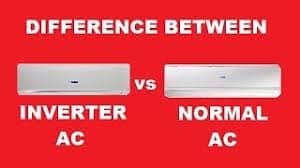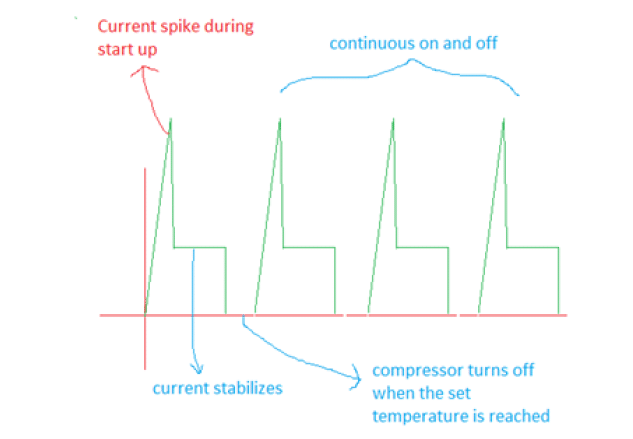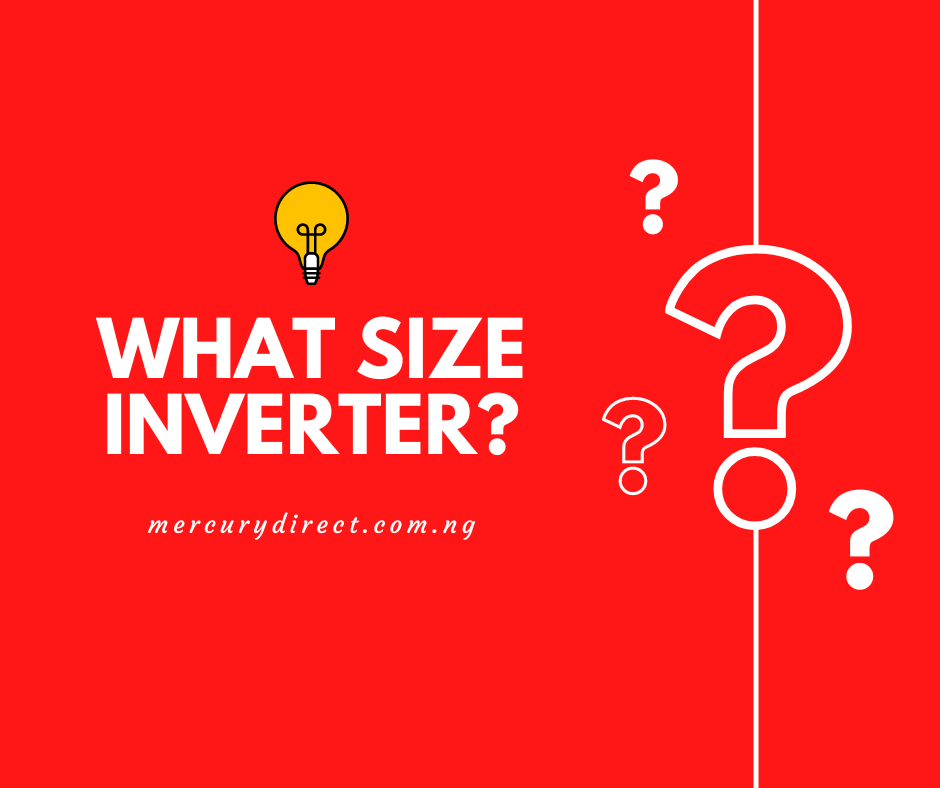Table of Contents
Finding the Best Inverter Size for Your Home’s Energy Requirements
An inverter is an essential component of any off-grid or backup power system, as it converts direct current (DC) power from a battery or solar panel array into alternating current (AC) power that can be used to run household appliances.
But finding the best Inverter size for your home's energy requirements can be a challenging task, as it depends on a variety of factors such as the type and number of appliances and electronics being used, the power requirements of each, and the overall energy needs of the household. In this article, we will provide an overview of how to calculate the inverter size needed to run a house and provide some tips for selecting the right inverter for your needs.
Determine the Total Wattage of Your Home’s Devices

The first step in selecting the right inverter size is to determine the total wattage of the devices you want to run in your home. To do this, you will need to add up the wattage of each device. If the wattage is not listed on the device, you can find it in the manual or by searching online. It's important to be as accurate as possible when looking at what inverter size you need for your home, as an inverter that is too small will not be able to provide sufficient power, while an inverter that is too large will be a waste of money and may not be necessary for your home's power needs.
When calculating the total wattage of your load, you need to take into consideration the starting and the running wattage of your devices. The running wattage is the wattage required to operate the device, which may be different from the starting wattage, which is the wattage required to start the device.
Appliances with motors, such as refrigerators and air conditioning units, often have a higher starting wattage than their running wattage. It's important to consider both the running wattage and the starting wattage when selecting an inverter, as you will need an inverter that is capable of handling the highest wattage requirement of any device you will be using.
Why are inverter appliances better?

Inverter air conditioners and refrigerators are designed specifically for use with inverters, and are typically more energy-efficient and able to run more smoothly on an inverter power supply compared to non-inverter models.
One reason for this is that inverter air conditioners and refrigerators are designed to operate at variable speeds, rather than running at a fixed speed like non-inverter models. This allows them to adjust their power consumption based on the cooling or refrigeration needs of the room or appliance, which can help to save energy and reduce strain on the inverter.
Inverter air conditioners and refrigerators also tend to have a more efficient compressor, which helps to reduce energy consumption and improve the overall efficiency of the appliance. This can be especially beneficial when using an inverter.
Overall, inverter air conditioners and refrigerators are generally a better choice for use with inverters due to their energy-efficient design, improved performance, and increased reliability.
Consider the Efficiency of the Inverter
It's also important to consider the efficiency of the inverter. Inverters can vary in their efficiency, which is the percentage of the input power that is converted into usable output power. An inverter with a high efficiency rating will be more efficient at converting the input power into usable output power, which means that it will use less input power to produce the same amount of output power as an inverter with a lower efficiency rating.
Calculate the number of batteries You Will Need
It is important to consider the number of batteries needed when choosing an inverter for your home because inverters use batteries to power your appliances. Deep cycle batteries are typically used in inverter systems and can be a significant cost factor. Keep in mind that the the inverter size you choose will determine the number of batteries you will need to power your load.
By choosing an inverter that is only large enough to power essential appliances, you can minimize the number of batteries needed and reduce overall costs. Additionally, running all appliances on an inverter can put a strain on the system and may shorten the lifespan of the batteries.
Instead, it is more cost-effective to use the inverter to power essential appliances during outages, and run non-essential appliances when the grid is available. This can help to optimize your inverters performance and ensure that it is operating at its best.
To calculate the number of batteries you will need, you first have to decide how many hours backup you want then you can use the following formula from the Mercury inverter size calculator to know how many batteries will give you what you want:
Backup Hours = (Inverter voltage) x (Battery bank capacity) x (Battery depth of discharge) x (Inverter Efficiency) / (Load)
For example, if you need 6 hours of backup power for a 1000 watt load and have a 48 volt inverter with 4, 200 amp-hour batteries:
48v (Inverter voltage) x 200AH (Battery bank capacity) x 0.8(Battery depth of discharge) x 0.8 (Inverter Efficiency) / 1000 (Load) = 6 hours Backup Time
Note:
The battery bank capacity is 200ah in the above example, because to get the required 48x, the four 200 amp-hours batteries need to be connected in series.
Connecting batteries in series involves connecting the positive terminal of one battery to the negative terminal of another battery, creating a chain of batteries. This increases the overall voltage of the battery bank, but does not increase the capacity or current.
Select an Inverter That Meets Your Home’s Power Requirements
With the total load calculated ,we recommend that you select an inverter size twice the total wattage of the devices you will be running on the inverter, so that you have a safety margin and do not run the risk of overloading.
If your total load is 1200 watts, you should choose an inverter size of at least 2400 watts.
It's important to choose an inverter that is capable of handling the power requirements of your home's devices to ensure reliable operation. If you want to use the inverter to power devices that have a high starting wattage, such as motors or compressors , you need to factor this in when deterring what inverter size is needed for your house.
Frequently Asked Questions
What inverter size do I need to run a fridge

During startup, a fridge can use three times its running wattage, but it only needs this surge for a fraction of a second. You can use the Mercury 1.5kva 12v Pure Sine Wave Inverter to run a refrigerator that consumes 300 watts running and 900 watts surge
If your fridge consumes 600 watts running and 1800 surge you can use the Mercury 2.4kva 24v Pure Sine Wave Inverter.
In order to properly size your inverter battery bank, you should keep in mind how many hours you plan on running your fridge with the inverter.
For example the Mercury 1.5kva 12v Pure Sine Wave Inverter connected to 2x Mercury Elite 200ah GEL batteries, will run a 300 watts fridge for approximately 12 hours.
Note:
When sizing an inverter for a refrigerator, it is important to consider the power requirements of not only the refrigerator, but also any other appliances and devices that you want to power with the inverter. This is because the inverter needs to be able to handle the total electrical load of all the appliances and devices that it will be powering.
what inverter size do I need to run a printer?
The model and voltage of a printer determine the size of the inverter needed to run it. For example, the HP M135A Monochrome LaserJet Printer uses 300 watts when actively printing, so a Mercury 1KVA 12 volt pure sine wave inverter would be sufficient.
On the other hand, the Brother HL 3150CDN LaserJet Printer uses approximately 1152 watts, so a larger Mercury 2.4KVA 12 volt pure sine wave inverter would be more suitable.
It is important to carefully consider the power requirements of your printer and choose an inverter that is capable of meeting those needs.
What size of inverter do I need to run a tv
To determine the size of inverter you need to run a TV, you will need to consider the power requirements of the TV and the duration for which it will be in operation.
The power requirement of a TV is typically measured in watts, and is usually listed in the TV's specification or owner's manual. For example, a typical LED TV might have a power requirement of around 50-100 watts.
In addition to the power requirement, you will also need to consider the duration for which the TV will be in operation. Most inverters are rated for their maximum continuous power output, which is the amount of power they can deliver for an extended period of time.
To determine the size of inverter you need, you will need to add up the power requirements of all the appliances you want to run, and then choose an inverter with a continuous power output that is slightly higher than this total. For example, if you want to run a TV with a power requirement of 75 watts, you could choose an inverter with a continuous power output of 100 watts to allow for some additional capacity.
It's also a good idea to choose an inverter with a slightly higher power output than you actually need, to allow for any unexpected increases in power demand or for future expansion of your system.
This chart that provides approximate wattage estimates for LCD, LED, and plasma TVs of different sizes up to 75 inches
| TV Type | TV Size | Wattage |
|---|---|---|
| LCD | 32 inches | 50-100 watts |
| LCD | 40-42 inches | 100-150 watts |
| LCD | 46-47 inches | 150-200 watts |
| LCD | 50-55 inches | 200-300 watts |
| LCD | 60-65 inches | 300-400 watts |
| LCD | 70-75 inches | 400-500 watts |
| LED | 32 inches | 50-100 watts |
| LED | 40-42 inches | 100-150 watts |
| LED | 46-47 inches | 150-200 watts |
| LED | 50-55 inches | 200-300 watts |
| LED | 60-65 inches | 300-400 watts |
| LED | 70-75 inches | 400-500 watts |
| Plasma | 32 inches | 100-200 watts |
| Plasma | 40-42 inches | 150-250 watts |
| Plasma | 46-47 inches | 200-300 watts |
| Plasma | 50-55 inches | 300-400 watts |
| Plasma | 60-65 inches | 400-500 watts |
| Plasma | 70-75 inches | 500-600 watts |
These wattage estimates are rough estimates and may vary depending on the specific model and size of the TV. To determine the exact wattage of a TV, it is best to refer to the specification or owner's manual.
This chart that provides approximate wattage estimates for various household appliances:
| Appliance | Wattage |
|---|---|
| Refrigerator | 200-700 watts |
| TV | 50-600 watts |
| Laptop | 50-95 watts |
| Desktop computer | 300-500 watts |
| Air conditioner | 1000-1200 watts |
| Play Station | 100-300 watts |
These wattage estimates are rough estimates and may vary depending on the specific model and size of the appliance. To determine the exact wattage of an appliance, it is best to refer to the specification or owner's manual.
Keep in mind that when choosing an inverter, you will need to consider the power requirements of all the appliances you want to run, as well as the duration for which they will be in operation. You will need to add up the power requirements of all the appliances you want to run and choose an inverter with a continuous power output that is equal to or greater than this total. It is also a good idea to choose an inverter with a twice the output than you actually need, to allow for any unexpected increases in power demand or for future expansion of your system.
Mercury Inverter Sizes
1.5KVA Solar Hybrid Inverter MPPT
2.4KVA Solar Hybrid Inverter MPPT
5KVA Solar Hybrid Inverter MPPT

